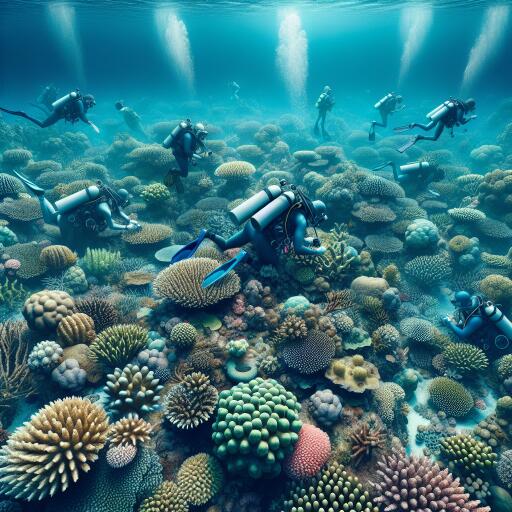
Finding Sanctuary: Discovery and Protection of Ancient Coral Gardens in Our Backyard
In a serendipitous twist of fate, a weather window and perfect operational conditions led a collaborative team from the Monterey Bay Aquarium Research Institute and the Monterey Bay National Marine Sanctuary to embark on an unexpected journey of discovery in December 2013. Originally set to study a submerged shipping container, they instead turned their attention to Sur Ridge, an underwater mountain some 30 miles off the coast of Point Sur. This geological marvel, stretching 11 miles in length and 3 miles across, with depths ranging from 2,700 to 5,100 feet, would soon reveal a breathtaking secret.
The team had no inkling of what awaited them as they deployed their technology to explore the ridge’s depths. “The sight that greeted us was beyond imagination. Lavish gardens of coral, vibrant with color and life, unfolded before our eyes, some reaching heights of up to 6 feet, their origins possibly dating back a millennium,” recounts a senior scientist from the expedition. The discovery of such a pristine underwater ecosystem, rich and teeming with life, marked a momentous occasion for the team and science at large.
Sur Ridge quickly transitioned from a mere point of interest to a focal point for groundbreaking research and conservation efforts. Here, a deep-sea coral observatory was established, pushing the boundaries of marine science. This remote underwater laboratory became a hub for multidisciplinary studies, ranging from analyzing ocean currents and examining marine particulate matter to conducting long-term photographic surveys of the coral inhabitants and even capturing environmental DNA. “An often-overlooked component of these ecosystems are the sponge gardens. Through advanced technologies, we’ve gleaned insights into how these sponges influence their surroundings, playing a vital role in the habitat’s overall health,” shared a marine biology expert involved in the study.
Research at Sur Ridge has not only enhanced our understanding of deep-sea ecosystems but has also led to pioneering techniques in coral restoration relevant on a global scale. These innovations have proven invaluable for efforts to rehabilitate damaged marine environments, such as those impacted by oil spills or destructive fishing practices. Initiatives born from the Sur Ridge studies are now aiding in restoration projects as far-reaching as the Gulf of Mexico, in response to the Deep Horizon oil spill, and closer to home, addressing damage from maritime accidents along the Central California coast.
To ensure the continued protection and study of these vital marine habitats, efforts are underway to designate specific areas of the ocean floor, including those surrounding Sur Ridge, as coral research and restoration zones. These designated regions would be safeguarded against activities that could harm the precious coral communities, such as certain types of commercial fishing practices, thereby securing the future of these ancient underwater gardens and the myriad of life they support.
As research forges ahead, the commitment to preserving and understanding our ocean’s wonders remains stronger than ever. “Exploring Sur Ridge has been an awe-inspiring experience. It’s a vivid reminder of the extraordinary mysteries our oceans hold and the critical importance of safeguarding these natural treasures for the generations to come,” expressed a chief pilot from the research team.
In the depths off our coasts lies a hidden realm of unparalleled beauty and ecological importance. Sur Ridge is a testament to the wonder and resilience of our planet’s oceans, a true national treasure that continues to inspire and challenge us to consider our role in its preservation and protection.





Leave a Reply